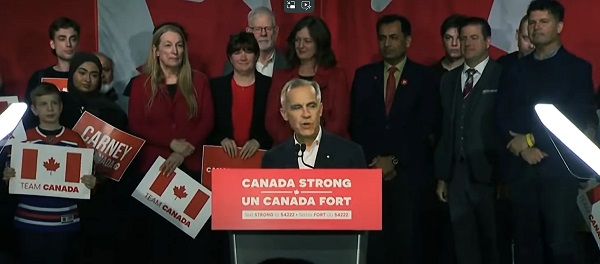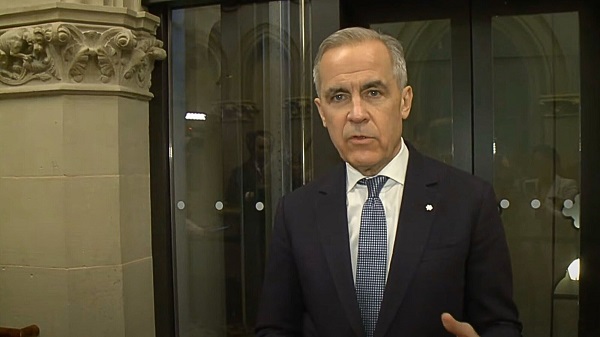Economy
Trudeau Government Capping the Canadian Economy (and Energy Industry) Just to Impress International Agencies
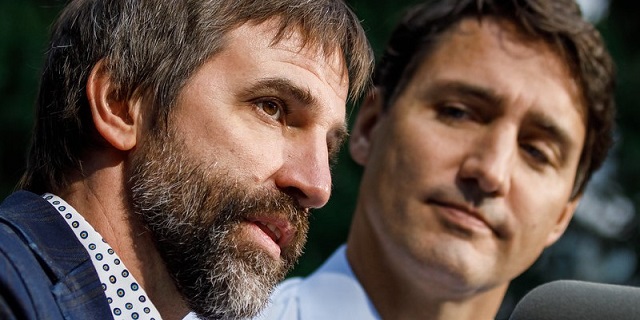
From EnergyNow.ca
By Kasha Piquette
The incoming Trump Presidency has promised to “unleash American energy” with plans to “free up the vast stores of liquid gold on America’s public land for energy development.” This week, the Trudeau government unveiled the draft details of its plans for a cap on greenhouse gas emissions from the Canadian oil and gas sector. These proposed regulations would cap all greenhouse gas emissions equivalent to 35 percent below levels in 2019 with the lofty goal of achieving a 40-45 percent reduction by 2030.
It is a plan that the province of Alberta and others contend would be a cap on production and cause elevated prices for consumer goods across Canada, cost up to 150,000 jobs and reduce national GDP by up to C$1 trillion ($720 billion).
These proposals would make Canada the only oil and natural gas-producing country to attempt an emissions cap on such a scale. The regulations propose to force upstream oil and gas operations to reduce emissions to 35 percent less than they were in 2019 by 2030 to 2032. Notably, while hydrocarbon production increased from 2019 to 2022, Canadian emissions from the sector declined by seven percent.
Perhaps significantly, and much to the apparent annoyance of Alberta’s Premier, the Federal announcement was made slightly ahead of the UN COP29 Climate Summit in Azerbaijan. Per the Paris Agreement, each country submits its climate ambitions to UN as National Determined Contributions (NDCs). However, the federal government has also passed the Net Zero Accountability Act, which, by December 1st, 2024, could require even more aggressive reduction targets for 2035. Does this mean that the federal government may be positioning itself to announce even more ambitious emission targets – all to be announced at that conference?
It is unclear whether, how and in what form, the emissions cap will come into effect. With the next federal election slated for late October 2025 and polls that show the current Liberal-NDP coalition government to be far behind the opposition Conservatives, the federal carbon tax and the proposed emission cap have an uncertain future.
Other business interests have voiced concerns about Canada’s increasingly discordant, incoherent climate policies and regulations, which have caused the Canadian oil and gas sector to be at a competitive disadvantage in the global energy market. Clearly, Alberta considers that the Federal government has, once again, overstepped its constitutional bounds with the proposed emissions cap and, along with its victorious Supreme Court challenge against the Impact Assessment Act, has vowed to launch more court challenges. Alberta and other Provinces have contended that, with regional exemptions, the federal carbon tax is being applied unfairly as a patchwork of standards with Alberta, New Brunswick, Saskatchewan, Ontario and Nova Scotia, and the opposition Conservative party, mounting a growing chorus against the Liberal government’s broader price on carbon. By contrast, the proposed regulations for an emissions cap have been aimed specifically at one industry sector – one that is largely concentrated in western Canada.
Meanwhile, Canadian oil production, aided by the new export capacity of the TransMountain Pipeline completed this year, has grown to a record 5.1 million barrels per day making Canada the prime (60%) source of US crude oil imports in 2023. Meanwhile, the industry has been engaged in considerations for the potential development of carbon capture and storage (CCS) to trap greenhouse gasses underground. However, this untested technology would cost billions, needs to be proven on a larger scale and requires industry cooperation combined with all levels of government support.
The Federal announcement, and the hostile reaction from Alberta and possibly other oil-producing provinces, mean that once again, Canadian investment in the oil and gas sector will be confronted with ever more uncertainty as they encounter time-consuming court challenges. These competing political agendas ensure that major Canadian investment decisions will, once again, be deferred while other international jurisdictions race to develop their hydrocarbon export capabilities, investments that are unencumbered by any emissions caps.
Canadians need to consider carefully how these policies and debates are affecting our energy security and standard of living as Canada. In addition to carbon pricing, Canada has already promulgated regulations for EV mandates in the transportation sector, policies that have required tens of billions in subsidies. It has also introduced the complex clean fuel standard and the proposed national clean electrical standards. These policies are affecting not just Canada’s productivity, GDP and exports. By attacking the Western provinces, Ottawa is unnecessarily creating regional tensions and a less politically stable federation. We need to think about how co-operative federalism can be re-established in ways that account for the basic needs of all Canadians – and not just accommodate arbitrary targets for emissions designed to impress international agencies.
Kasha Piquette is an Alberta-based strategic energy advisor and a former Deputy Minister of Alberta Environment and Protected Areas.
2025 Federal Election
Canada drops retaliatory tariffs on automakers, pauses other tariffs

 MxM News
MxM News
Quick Hit:
Canada has announced it will roll back retaliatory tariffs on automakers and pause several other tariff measures aimed at the United States. The move, unveiled by Finance Minister François-Philippe Champagne, is designed to give Canadian manufacturers breathing room to adjust their supply chains and reduce reliance on American imports.
Key Details:
- Canada will suspend 25% tariffs on U.S. vehicles for automakers that maintain production, employment, and investment in Canada.
- A broader six-month pause on tariffs for other U.S. imports is intended to help Canadian sectors transition to domestic sourcing.
- A new loan facility will support large Canadian companies that were financially stable before the tariffs but are now struggling.
Diving Deeper:
Ottawa is shifting its approach to the escalating trade war with Washington, softening its economic blows in a calculated effort to stabilize domestic manufacturing. On Tuesday, Finance Minister François-Philippe Champagne outlined a new set of trade policies that provide conditional relief from retaliatory tariffs that have been in place since March. Automakers, the hardest-hit sector, will now be eligible to import U.S. vehicles duty-free—provided they continue to meet criteria that include ongoing production and investment in Canada.
“From day one, the government has reacted with strength and determination to the unjust tariffs imposed by the United States on Canadian goods,” Champagne stated. “We’re giving Canadian companies and entities more time to adjust their supply chains and become less dependent on U.S. suppliers.”
The tariff battle, which escalated in April with Canada slapping a 25% tax on U.S.-imported vehicles, had caused severe anxiety within Canada’s auto industry. John D’Agnolo, president of Unifor Local 200, which represents Ford employees in Windsor, warned the BBC the situation “has created havoc” and could trigger a recession.
Speculation about a possible Honda factory relocation to the U.S. only added to the unrest. But Ontario Premier Doug Ford and federal officials were quick to tamp down the rumors. Honda Canada affirmed its commitment to Canadian operations, saying its Alliston facility “will operate at full capacity for the foreseeable future.”
Prime Minister Mark Carney reinforced the message that the relief isn’t unconditional. “Our counter-tariffs won’t apply if they (automakers) continue to produce, continue to employ, continue to invest in Canada,” he said during a campaign event. “If they don’t, they will get 25% tariffs on what they are importing into Canada.”
Beyond the auto sector, Champagne introduced a six-month tariff reprieve on other U.S. imports, granting time for industries to explore domestic alternatives. He also rolled out a “Large Enterprise Tariff Loan Facility” to support big businesses that were financially sound prior to the tariff regime but have since been strained.
While Canada has shown willingness to ease its retaliatory measures, there’s no indication yet that the U.S. under President Donald Trump will reciprocate. Nevertheless, Ottawa signaled its openness to further steps to protect Canadian businesses and workers, noting that “additional measures will be brought forward, as needed.”
Business
DOGE Is Ending The ‘Eternal Life’ Of Government
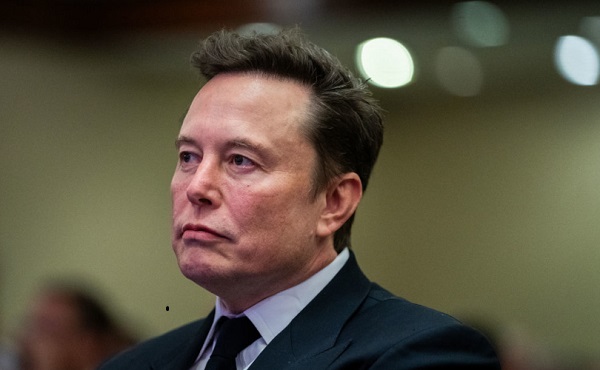

From the Daily Caller News Foundation
By David Bossie
In his 1964 “A Time For Choosing” speech, Ronald Reagan famously said, “a government bureau is the nearest thing to eternal life we’ll ever see on this earth.” And for more than 60 years, President Reagan’s words have proven to be true. However, with the historic re-election of President Donald Trump and the creation of the Department of Government Efficiency (DOGE) under the leadership of Elon Musk, the Gipper’s contention is finally being challenged – and not a moment too soon.
The Trump Administration inherited a horribly bloated federal government in dire need of common sense streamlining from top to bottom. For decades, the executive branch has expanded at an incomprehensible rate and along with it, so has waste, fraud, and abuse. Presidents on both sides of the aisle have made promises to tighten the government’s belt, shrink the bureaucracy, and return power to the people where it belongs. Those efforts for the most part – however well-intentioned – never got off the ground. The reality is that when politicians have been forced to choose between a legislative priority and cutting government spending, cuts are always the first casualty. But currently, with our $36 trillion national debt spiraling out of control, reining in the size and scope of government is no longer a choice, but a necessity.
President Trump is the perfect leader for these trying times. He’s battletested and fears nothing – and no challenge is too large. Whether it’s securing the border, growing the economy, forging peace in Ukraine and the Middle East, or negotiating fair trade deals, this president is on a mission to save America. And if any chief executive is going to have success at deconstructing the administrative state, it’s Trump the steel-spined change agent. The shadowy deep state doesn’t scare him, the biased liberal media can’t intimidate him, and this time there are no phony partisan investigations aiming to sidetrack him. Trump made a promise to bring fiscal responsibility back to governing, and along with Musk and DOGE, they’re finally conducting the “audit with teeth” that the American people have been waiting for, and their hard work is turning out to be infectious.
Dear Readers:
As a nonprofit, we are dependent on the generosity of our readers.
Please consider making a small donation of any amount here. Thank you!
With each passing day, a different member of the cabinet is announcing a new cut, discovering a duplicative program, or updating an antiquated system to steer us away from the fiscal cliff that’s rapidly approaching. When the president also happens to be a highly successful businessman, making the business operate more smoothly and for less money is the name of the game. Trump has brought this mindset to the White House and according to recent polling 77 percent favor a full review of government spending.
President Trump is going back to the basics that have become taboo in Washington, like asking fundamental questions about whether an agency has been successful in its mission or if a program is still necessary. In the case of the Education Department, Trump sees an emergency and is not willing to kick the can down the road any longer. The president believes that education excellence for our children is essential so America can compete for generations to come. Drastic reform is long overdue and that means moving education decisions back to state and local officials – and parents. That’s why President Trump is taking the steps to confront the failed status quo and close the underperforming department so we can turnaround lackluster public schools and low-test scores.
Similarly, with the decision to end USAID and slash foreign aid, Trump and DOGE are simply putting America first. America is handing out billions upon billions in taxpayer dollars around the globe on programs that should be spent on fixing our own domestic problems. The plan to decentralize and modernize the Agriculture Department is another great example of thinking outside the box. The American people understand the rationale that downtown Washington, D.C. is the last place decisions about farming should be made. Relocating the department to various hubs around the heartland is common sense.
Additionally, the announcement that the Department of Health and Human Services will cut 20,000 full-time employees is part of President Trump’s vision to “right-size the federal government and unleash the private sector again” in the words of Treasury Secretary Scott Bessent. And word that the Trump Administration is planning to work with Congress to finally defund National Public Radio and the Public Broadcasting Service is welcome news to millions of Americans who believe sending taxpayer funds to biased news outlets is wrong.
DOGE is also doing courageous work at the Social Security Administration (SSA). The amazing efforts to identify individuals who are either deceased, in the country illegally, or otherwise ineligible will help stave off the program’s insolvency, which experts predict is only ten years away. When a DOGE official disclosed that 40 percent of the calls made to SSA are from would-be fraudsters trying to exploit the system, it’s become all too obvious that new safeguards must be adopted.
When it comes to the question of how much money DOGE will ultimately end up saving taxpayers, in the context of our $36 trillion debt crisis, the more the better. However, the overall change in mindset – forcing government to operate efficiently and responsibly like businesses and families – and passing that mindset onto future administrations is perhaps the most critical shift that can be made. In fact, in an ideal scenario, every state, county, and city would have its very own DOGE operation. We must get serious about cutting government waste now or we’ll go bankrupt. That’s just the reality of the situation and President Trump knows it.
David Bossie is the president of Citizens United and served as a senior adviser to the Trump-Pence 2020 campaign. In 2016, Bossie served as deputy campaign manager for Donald J. Trump for President and deputy executive director for the Trump-Pence Transition Team.
-

 2025 Federal Election2 days ago
2025 Federal Election2 days agoRCMP Whistleblowers Accuse Members of Mark Carney’s Inner Circle of Security Breaches and Surveillance
-
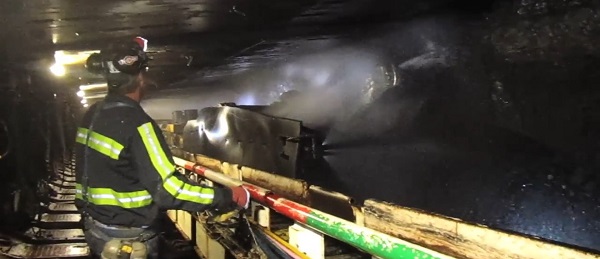
 Daily Caller20 hours ago
Daily Caller20 hours agoTrump Executive Orders ensure ‘Beautiful Clean’ Affordable Coal will continue to bolster US energy grid
-
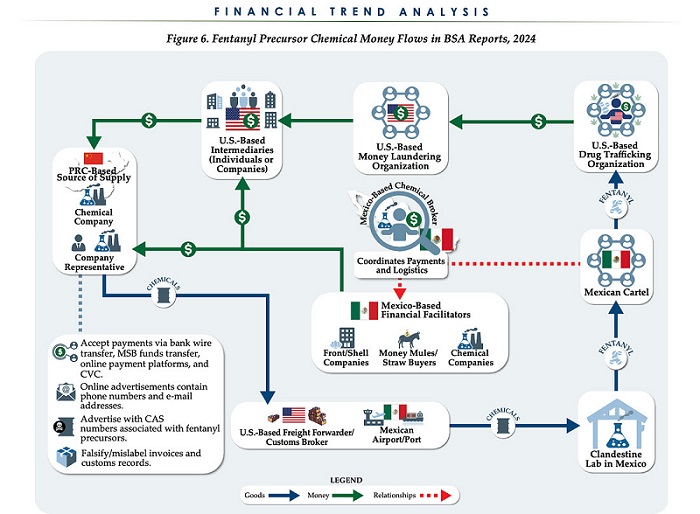
 Business22 hours ago
Business22 hours agoChina, Mexico, Canada Flagged in $1.4 Billion Fentanyl Trade by U.S. Financial Watchdog
-
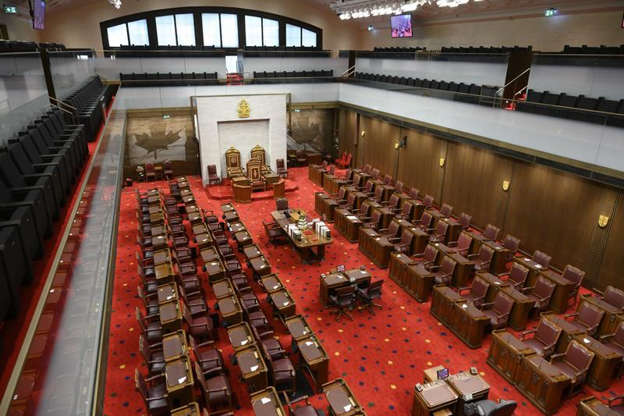
 2025 Federal Election2 days ago
2025 Federal Election2 days agoBureau Exclusive: Chinese Election Interference Network Tied to Senate Breach Investigation
-

 2025 Federal Election20 hours ago
2025 Federal Election20 hours agoBREAKING from THE BUREAU: Pro-Beijing Group That Pushed Erin O’Toole’s Exit Warns Chinese Canadians to “Vote Carefully”
-

 2025 Federal Election1 day ago
2025 Federal Election1 day agoTucker Carlson Interviews Maxime Bernier: Trump’s Tariffs, Mass Immigration, and the Oncoming Canadian Revolution
-

 2025 Federal Election18 hours ago
2025 Federal Election18 hours agoAllegations of ethical misconduct by the Prime Minister and Government of Canada during the current federal election campaign
-
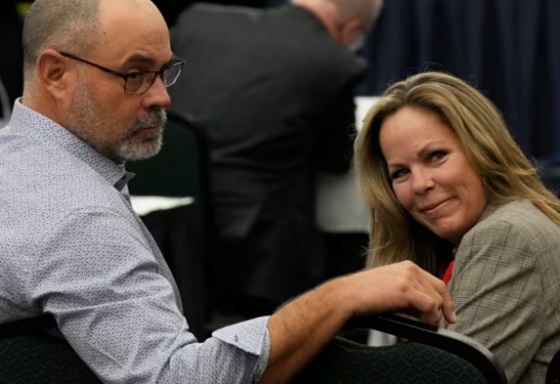
 COVID-1915 hours ago
COVID-1915 hours agoTamara Lich and Chris Barber trial update: The Longest Mischief Trial of All Time continues..



